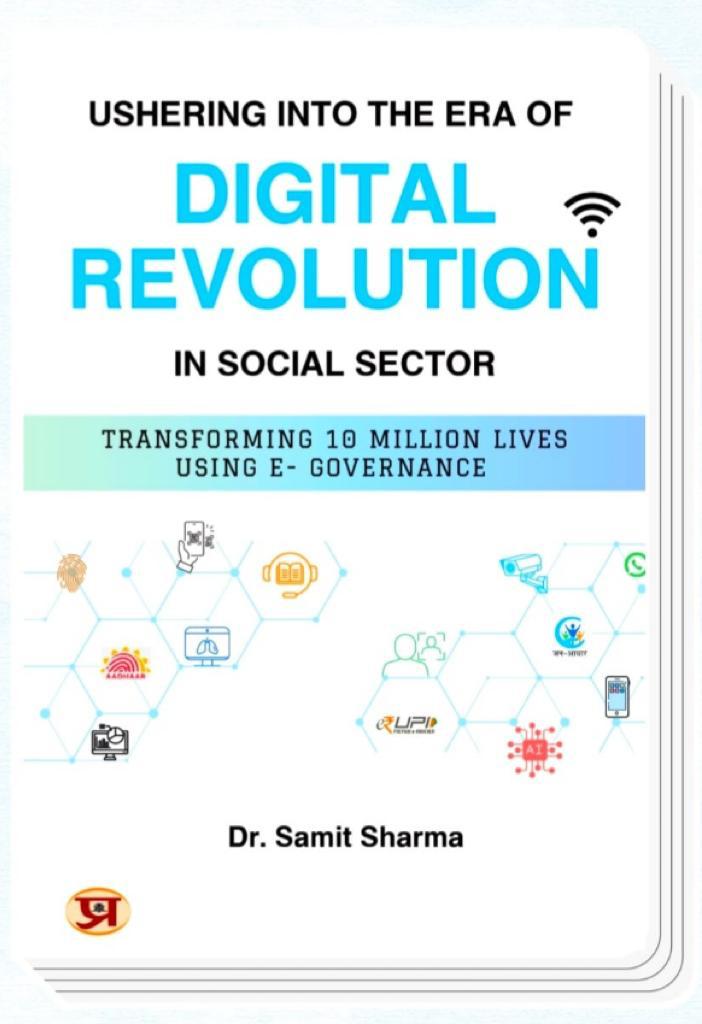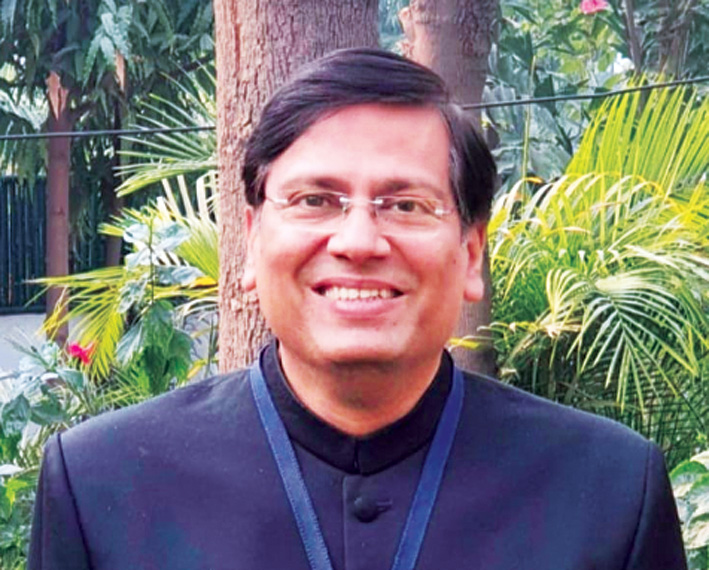By Manish Goyal
For a doctor of medicine, writing a book on digital technology sounds strange. But Dr Samit Sharma, an MD in paediatric medicine, has broken the barrier. His latest book on technological intervention in social sector – Digital revolution in social sector: Transforming 10 million lives using e-governance – is a doctrine for civil servants, looking to transform social sector.
The book was unveiled by Rajasthan chief secretary Usha Sharma and director general of police Umesh Mishra. The introduction of the book was given by Rajasthan government's finance secretary Dr K K Pathak while V Srinivas, secretary, department of administrative reforms and public grievance, Government of India gave a detailed deliberation on the role of civil servants in building up of digital India. Srinivas is a 1989 batch Rajasthan cadre officer serving on deputation in centre. Senior officers including additional chief secretary Shubhra Singh, additional director general of police, anti corruption Hemant Priyadarshy were also present. IAS officers Ravi Jain and Arushi Malik managed the proceedings on the stage.
Journey of excellence continues
Dr. Sharma, a 2004 batch IAS officer is known for his passion for evolving path breaking resolutions. Even during his early days as a career bureaucrat, he introduced the concept of generic medicine when he was Chittorgarh collector. Just four years into service, he successfully implemented that revolutionary concept benefiting over five lakh patients. For this initiative, he was conferred with the Prime Minister Award for Excellence in Public Administration and was recognised as an administrative best practice.
That was year 2008. Now 15 years down the line Sharma has evolved as a seasoned bureaucrat and so has his penchant for revolutionising government machinery. From improving health of 0.5 million patients in 2008 to touching 10 million lives through technological intervention, Samit has traversed a long way.
Sharma, now serving as secretary, social justice and empowerment department felt the need to use hi-end technology for transparency and efficiency especially in disbursal of pension, scholarships and other schemes related to monetary benefits. He thought of a roadmap to revolutionise the social sector through technology and jotted down the innovations which finally shaped up in a book.

Book loaded with technological interventions
The book has 30 chapters which talks about e-reforms in social welfare schemes and ensuring quality service delivery The technology solutions that Dr. Sharma has presented include AI driven face authentication using mobile app for enrolling in social security pension (SSP)
schemes, data based approvals for SSP without human intervention, leveraging algorithms for SSP eligibility checks, simplifying annual verification of SSPusin beneficiaries using Aadhar and AI. The IT solutions that enabled bringing citizens and government closer together include use of digilocker and APIs for linking scholarship portals, the Anuprati free coaching scheme, digitising the Dr. B.R.Ambedkar DBT voucher scheme, use of smartboards or digital libraries in residential schools, use of CCTV monitoring of special homes, DBT's role in assisting COVID-19 families, the Palanhaar Mobile App for inclusive support of orphans and needy children, providing timely assistance to SC/ST atrocity victims, and NGO portal for providing quality care to specially abled people.
What next
The book talks about providing an information gateway to governments which can plan their welfare schemes and implement those schemes on targeted groups without any risk of leakage.
Besides providing transparency, the technological innovations practised by Dr. Sharma promise to build a robust delivery mechanism for all kinds of welfare schemes.

The BuckStopper, run by a group of seasoned journalists, holds the powerful accountable. The buck stops with them, as they cannot shrug off their official responsibilities.



